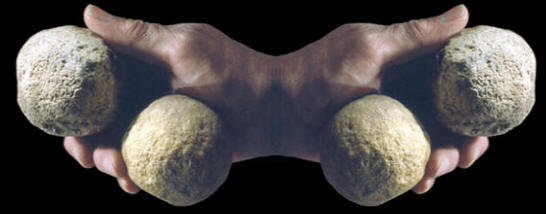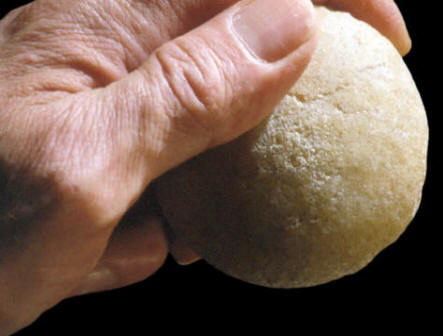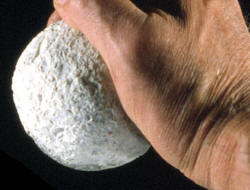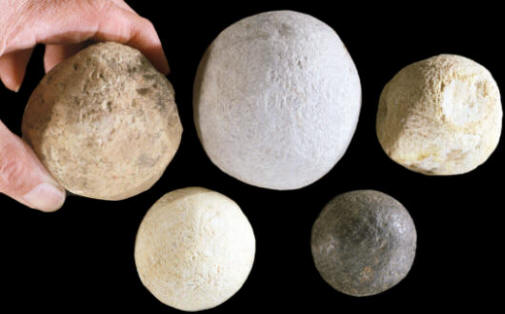|
||
|
||
|
"After four hours of use as
a hammerstone, an angular chunk of quartz was transformed into a
virtually perfect spheroid, just by being used as a hammer stone."---------1993,
Kathy D. Schick & Nicholas Toth, "Making Silent Stones Speak," p. 133.
Hammerstones are utilitarian tools that are represented in the archaeological record on sites around the world. Although they are unimpressive to look at, experimental archaeology has shown them to be among some of the most important artifacts. Hammerstone technology, as applied to stone work, was used to quarry stone and manufacture everything from a wide variety of stone tools to great statues, structures and ritual items. Hammerstones are also impressive for the length of time they have been in use. They are found on many of the oldest sites in Africa, Asia and Europe. |
||
|
||
|
Hammerstones have been referred to in various written reports and verbal descriptions as hammers, hammerstones, knockers, spheroids, sub-spheroids, stone balls, bolas stones, hard-hammers, handstones, stone shaping tools, stone picks and game stones. Some of the earlier descriptions, such as bolas stones, were used to describe the spherical stones found in Bed I and II at Olduvai Gorge. Recent manufacturing experiments (Schick & Toth 1993) has shown that the spherical shapes result from their use as hammerstones. But a secondary use as projectiles could never be ruled out. |
||
|
||
|
Hammerstones are recognized as the earliest flintknapping tools. John Whittaker writes in "Flintknapping" that: "Hard-hammer direct percussion, in which flakes are produced by striking one stone with another, is the first and most basic knapping technique." But in addition, they would also have served as multi-purpose tools. They would have been used to make other more sophisticated stone tools but also for other tasks such as breaking open a bone to collect the morrow or to break open nuts to collect eatable seeds. Determining exactly what or how many different materials any one hammerstone may have struck during its useful life will probably always be pure speculation. |
||
|
Hammerstones date to the Oldowan stone tool industry in Africa, approximately 1.9 million years ago and they were probably in use much longer than that. In fact, these tools have been used by several different species of humans. The longest period of time they were in use by an extinct human was by Homo erectus who used them for approximately 1.2 million years. Homo habilis, Homo erectus and Neanderthals have used hammerstones hundreds of thousands of years longer than modern humans have been using them. Even otters and chimpanzees use stones to break open shells and nuts. |
||
| CONTINUE ON TO PAGE TWO | ||
|
"REFERENCES"
1898,
Williams, Frederick H., "Prehistoric Remains of the Tunxis Valley,
Hammer and Pit Stones," The American Archaeologist, vol. 2, part
4, pp. 87-88. |
||






